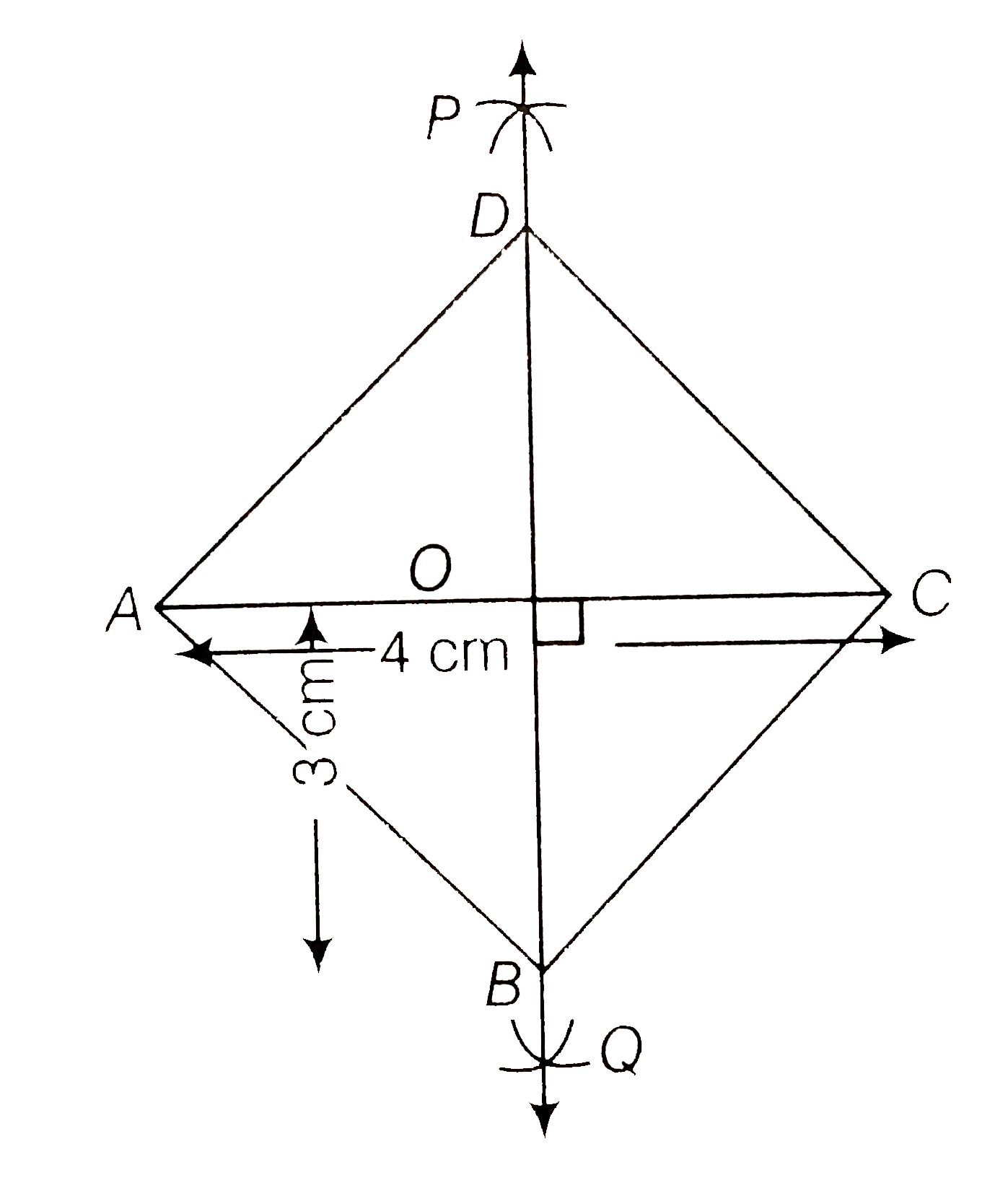A rhombus whose diagonals are 4cm and 6cm in lengths.
We know that , all sides of a rhombus are equal and the diagonals of a rhombus are equal and the diagonals of a rhombus are perpendicular bisectors of one another. So, to construct a rhombus whose diagonals are 4cm and 6cm use the following stegs.
(i) Draw the diagonal say AC=4cm
(ii) Taking A and C as centres and radius more than 12AC draw arcs on both sides of the line segment AC to intersect each other.
(iii) Cut both arcs intersect each other.
(iv) Let PQ intersect AC at the point O. Thus , PQ is perpendicular bisector of AC.
(v) Cut off 3cm lengths from OP and OQ, then we get points B and D.
(vi) Now , join AB,BC,CD, and DA.
Thus, ABCD is the required rhombus.
Justification
Since, D and B lie on perpendicular bisector of AC.
DA = DC and BA = BC ....(i)
[since, every point on perpendicular of line segment is equidistant from end points of line segment]
Now, ∠DOC=90∘
Also, OD = OB = 3cm
Thus , AC is perpendicular bisector or BD.
CD = CB ....(ii)
From Eqs. (i) and (ii), AB = BC = CD = DA
Hence , ABCD is a rhombus.

Topper's Solved these Questions
Similar Questions
Construct a rhombus whose diagonals are 4cm and 6cm in length. Measure each side of the rhombus.
View SolutionDraw the following
A rhombus whose diagonals are 5.2 cm and 6.4 cm long.
View SolutionUsing ruler and compasses only, construct a rhombus whose diagonals are 8cm and 6cm. measure the length of its one side.
View SolutionFind the perimeter of a rhombus whose diagonals are 30 cm and 34 cm.
View SolutionFind the perimeter of a rhombus whose diagonals are 30 cm and 40 cm.
View SolutionConstruct a rhombus whose diagonals are 6 cm and 8 cm and also find its side.
View SolutionConstruct a rhombus whose diagonals are 4.7 cm and 5-4 cm.
View SolutionConstruct a rhombus whose diagonals are of length 10cm and 6cm.
View SolutionConstruct a rhombus whose diagonals are 10cm and 8cm.
View SolutionFind the area of the rhombus , the lengths of whose diagonals are 30 cm and 16 cm .Also , find the perimeter of the rhombus .
View Solution
